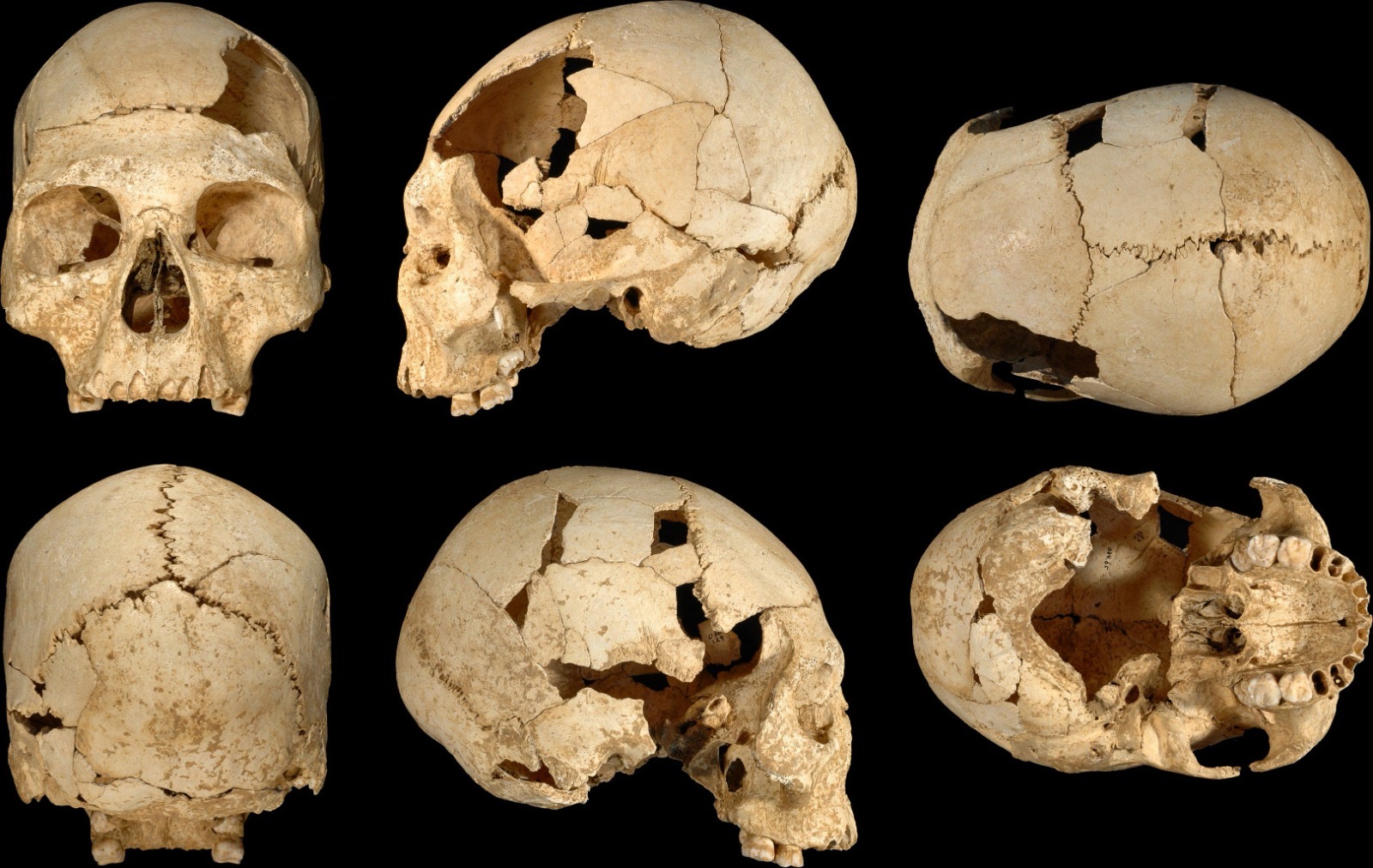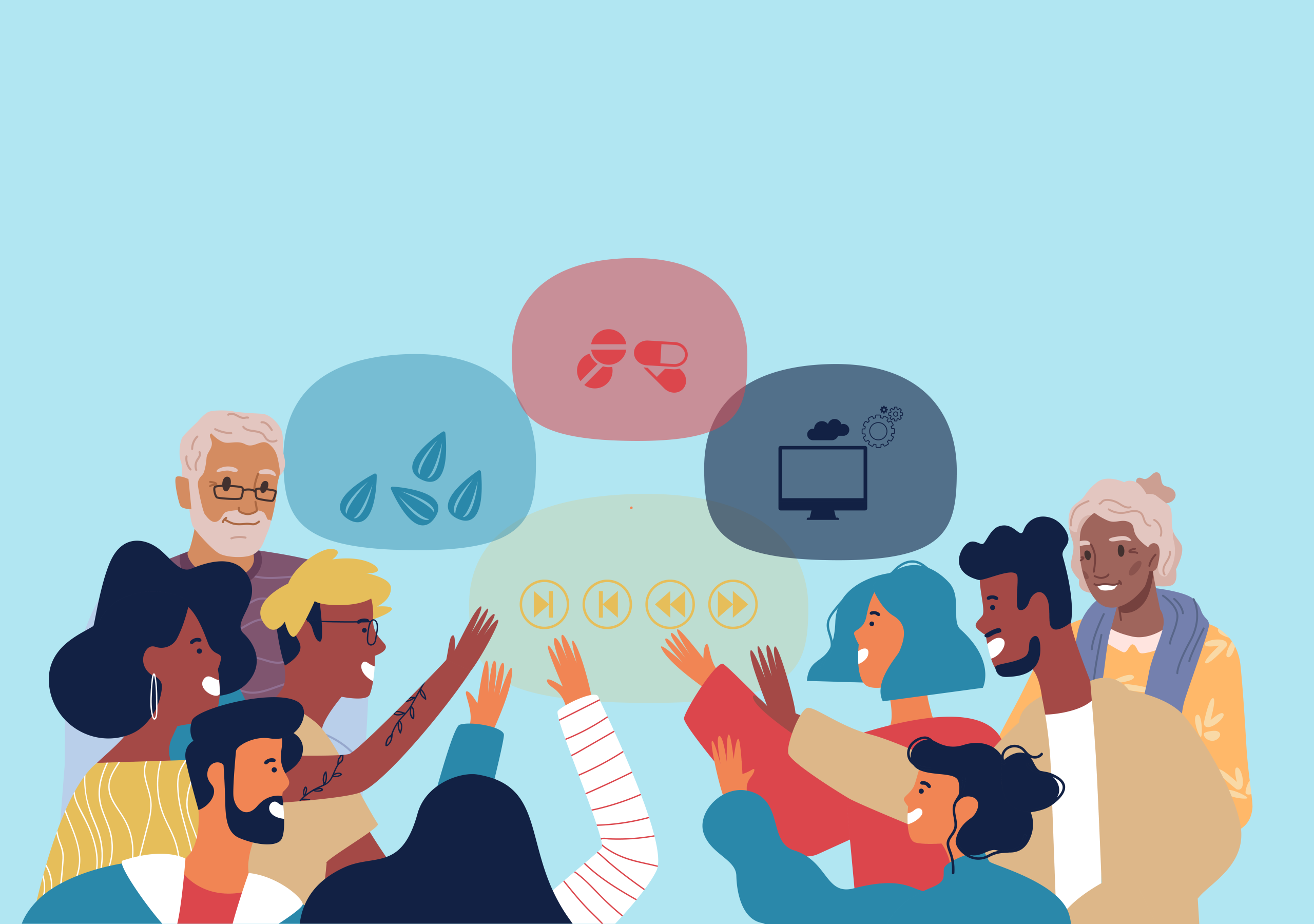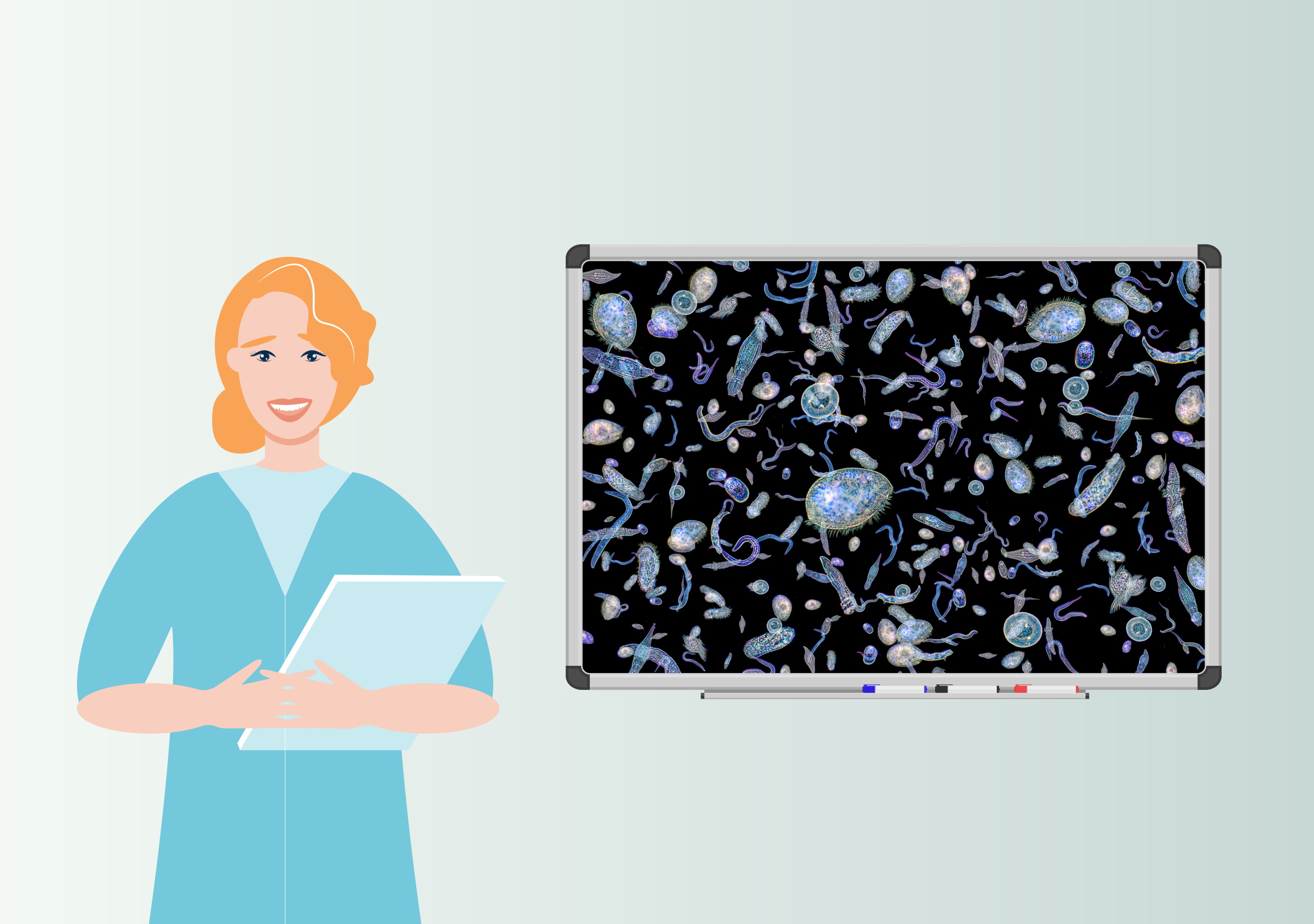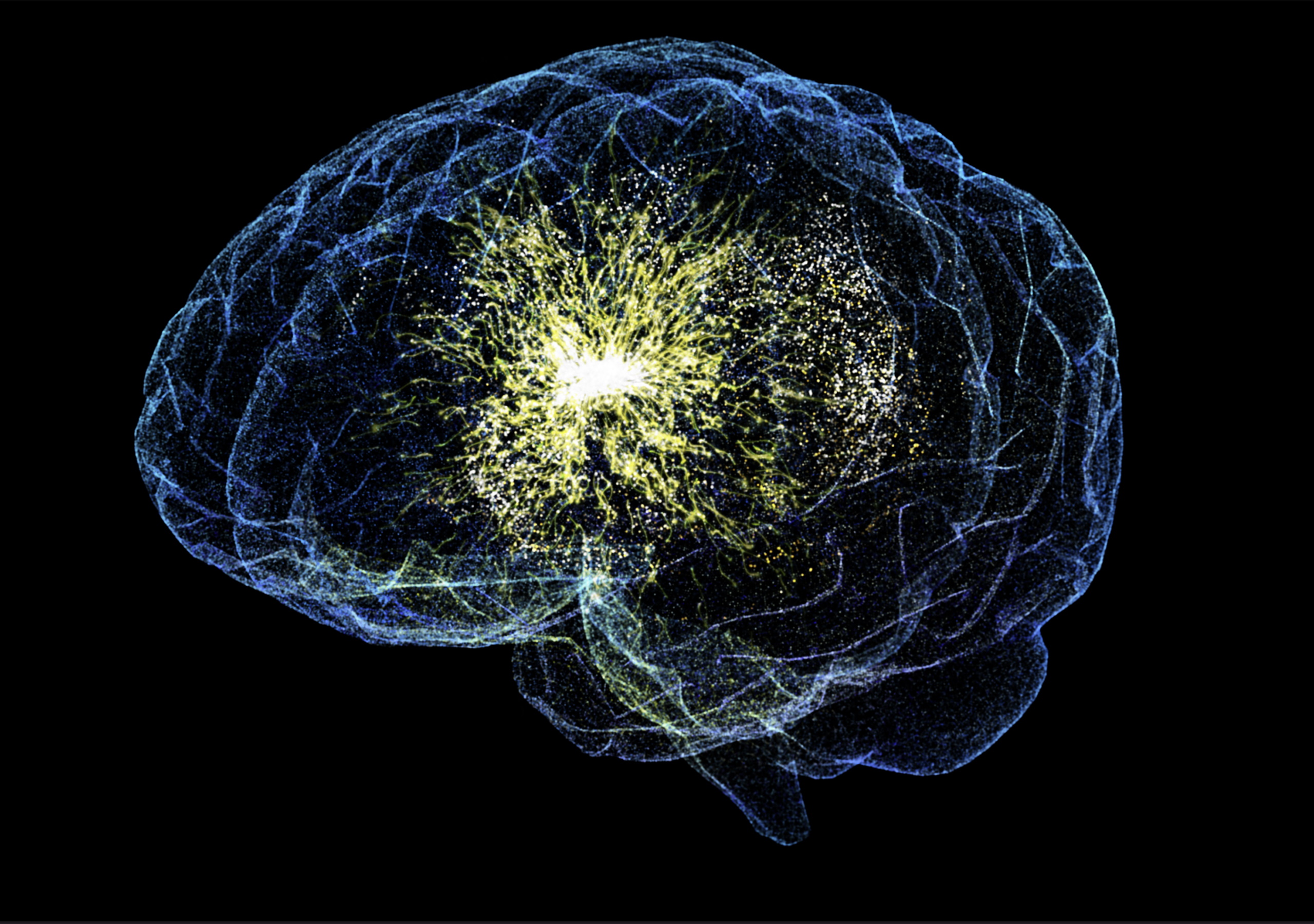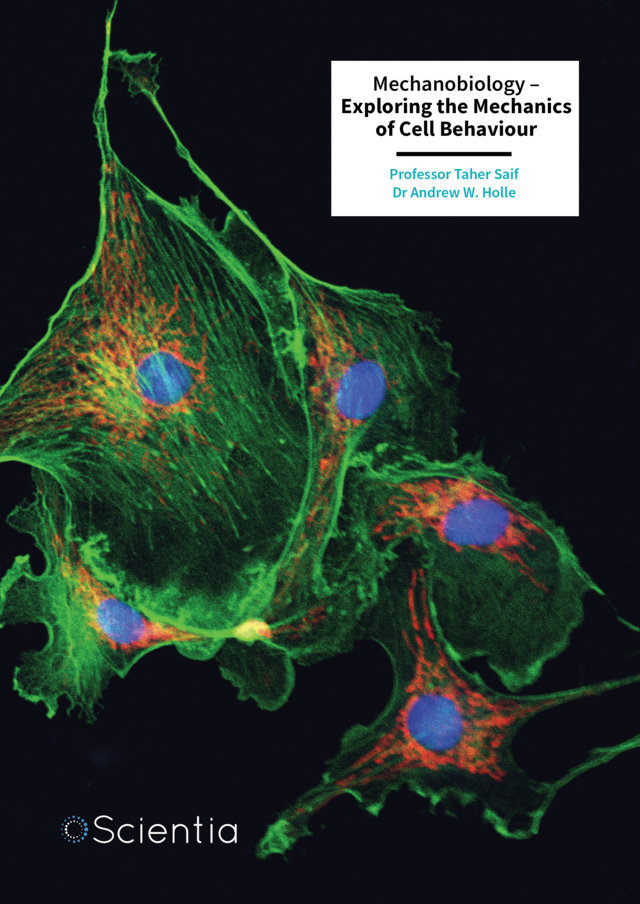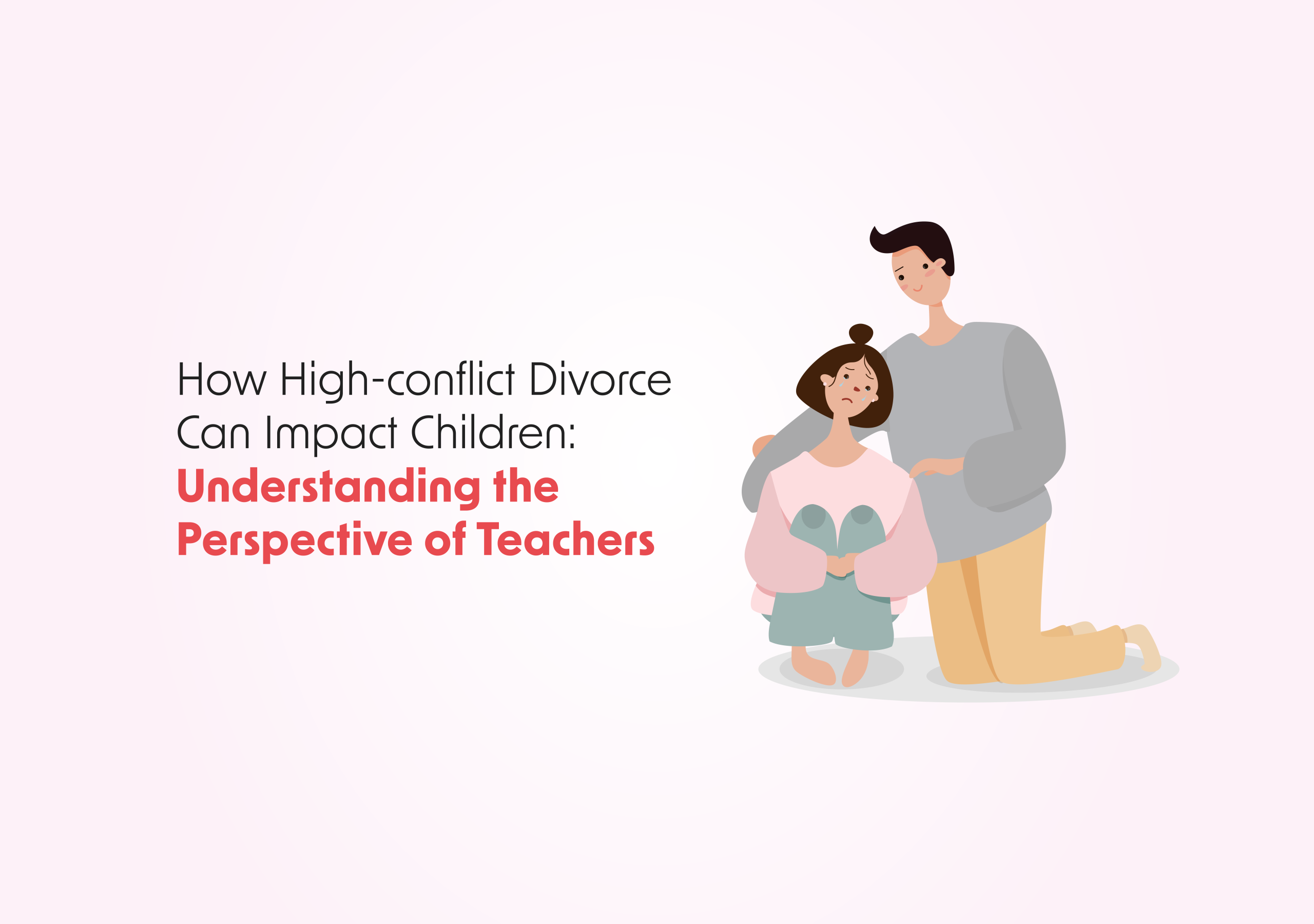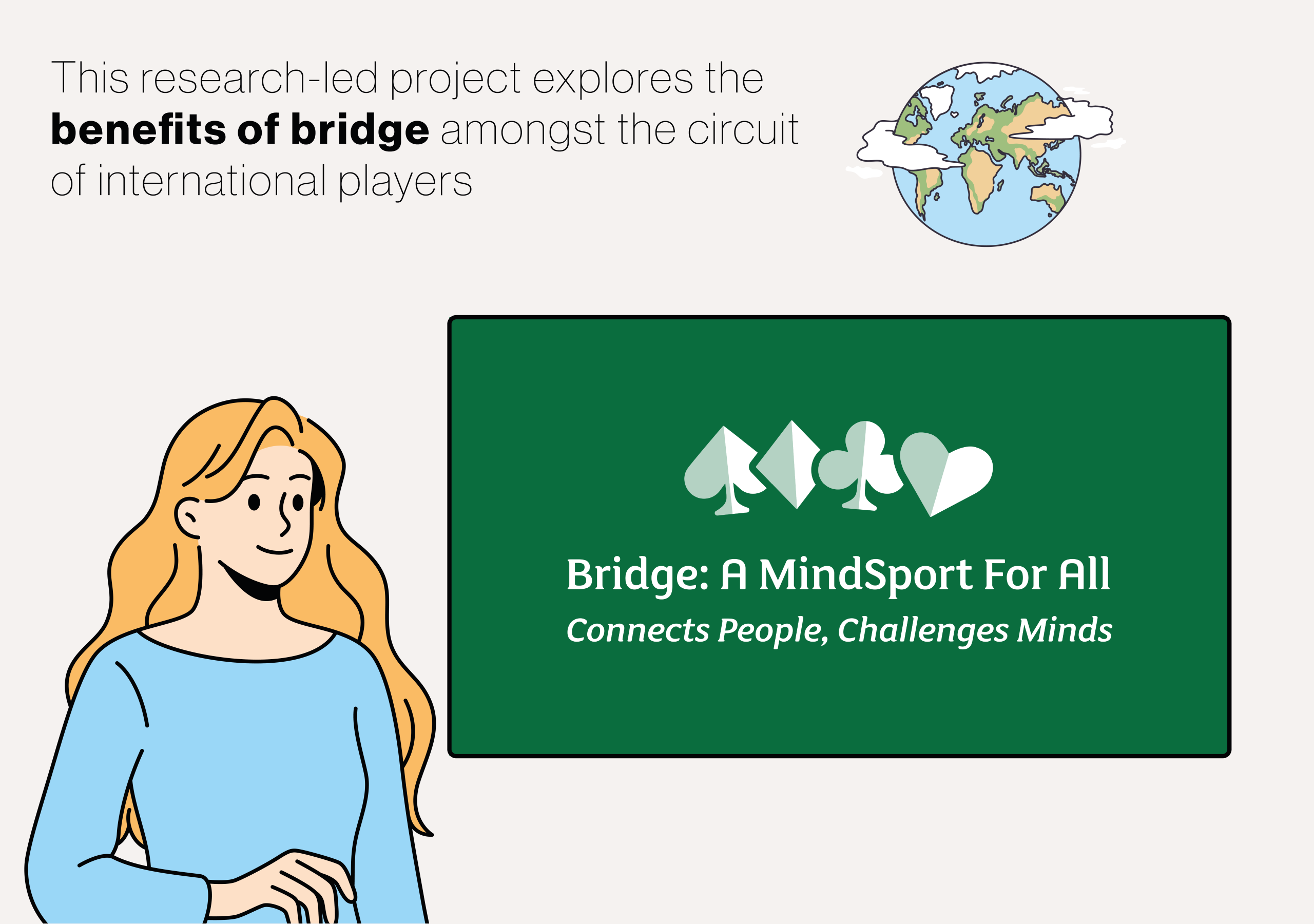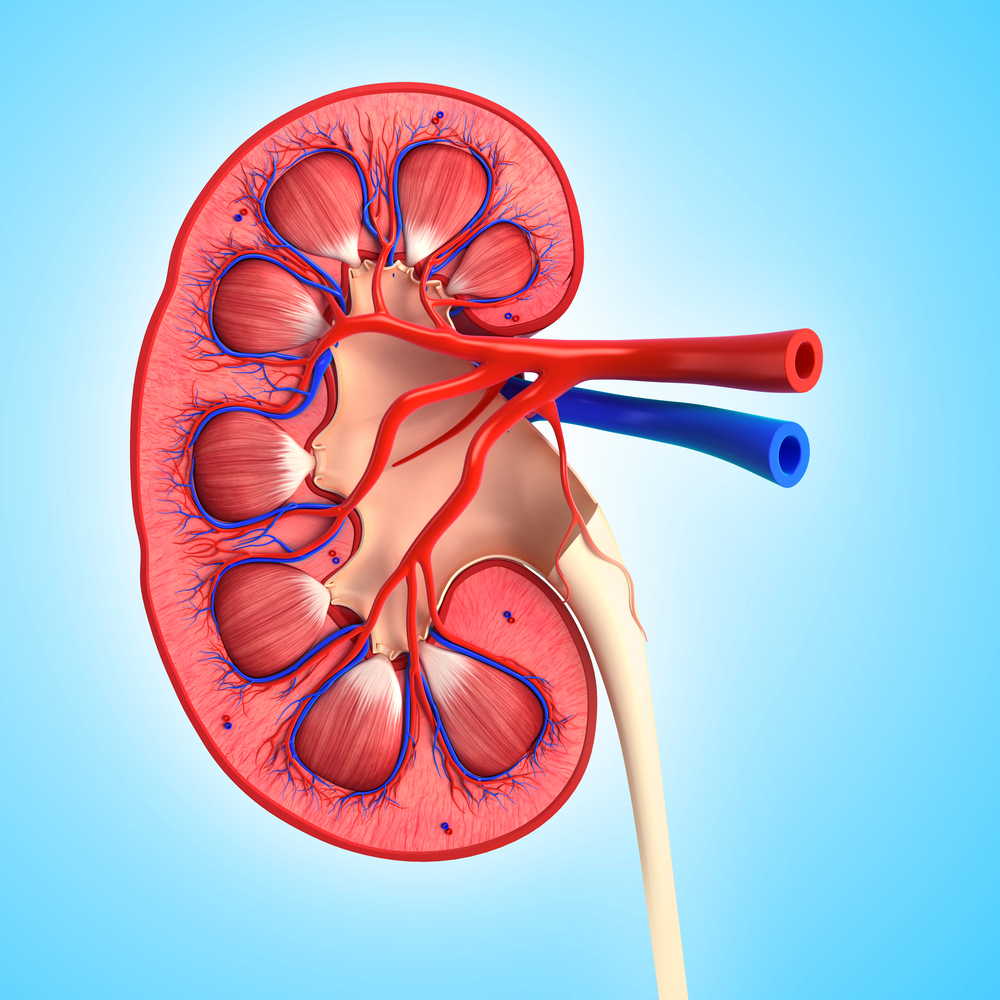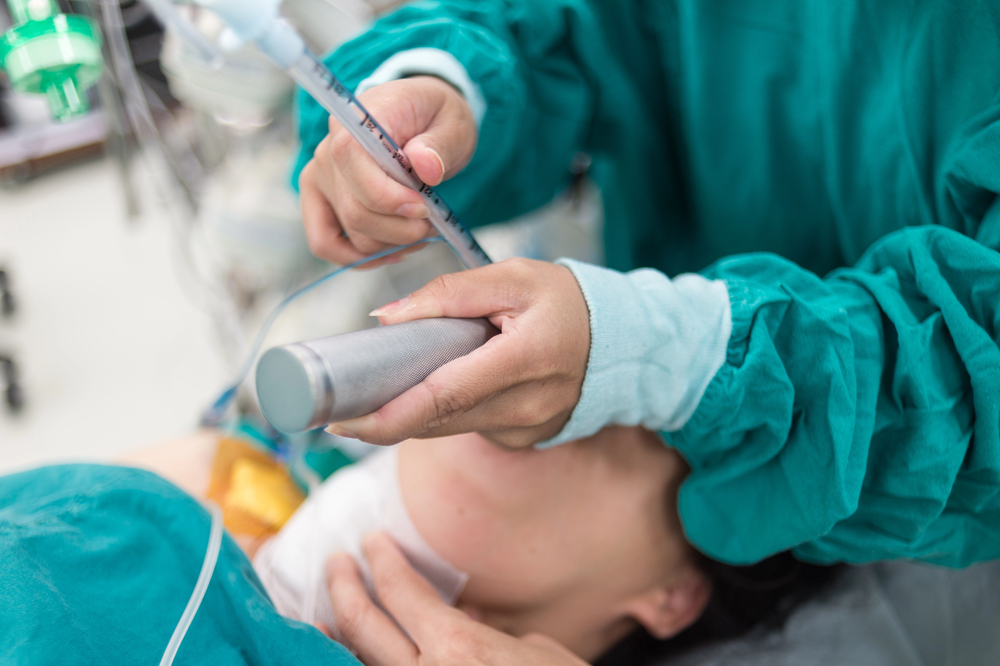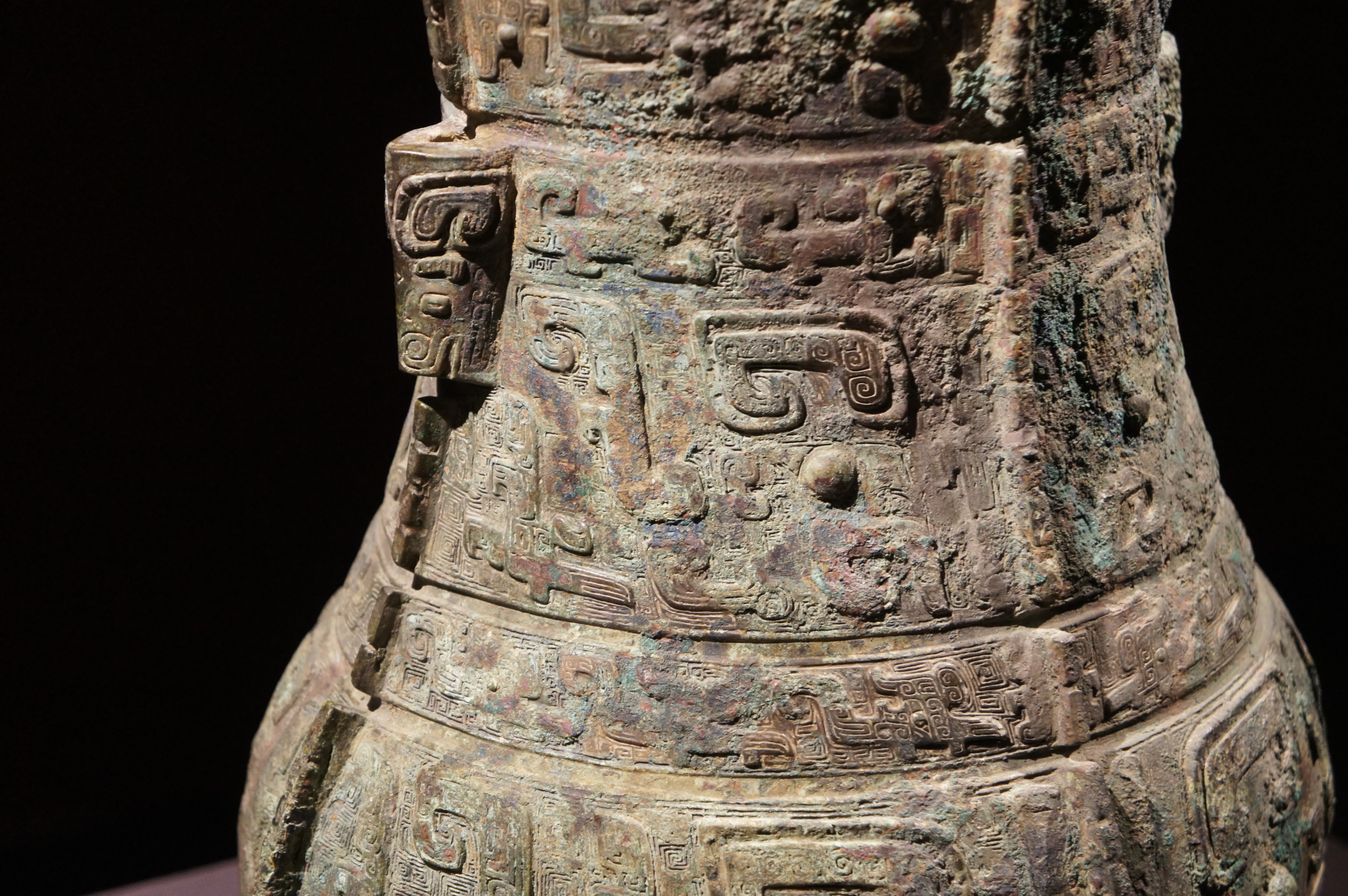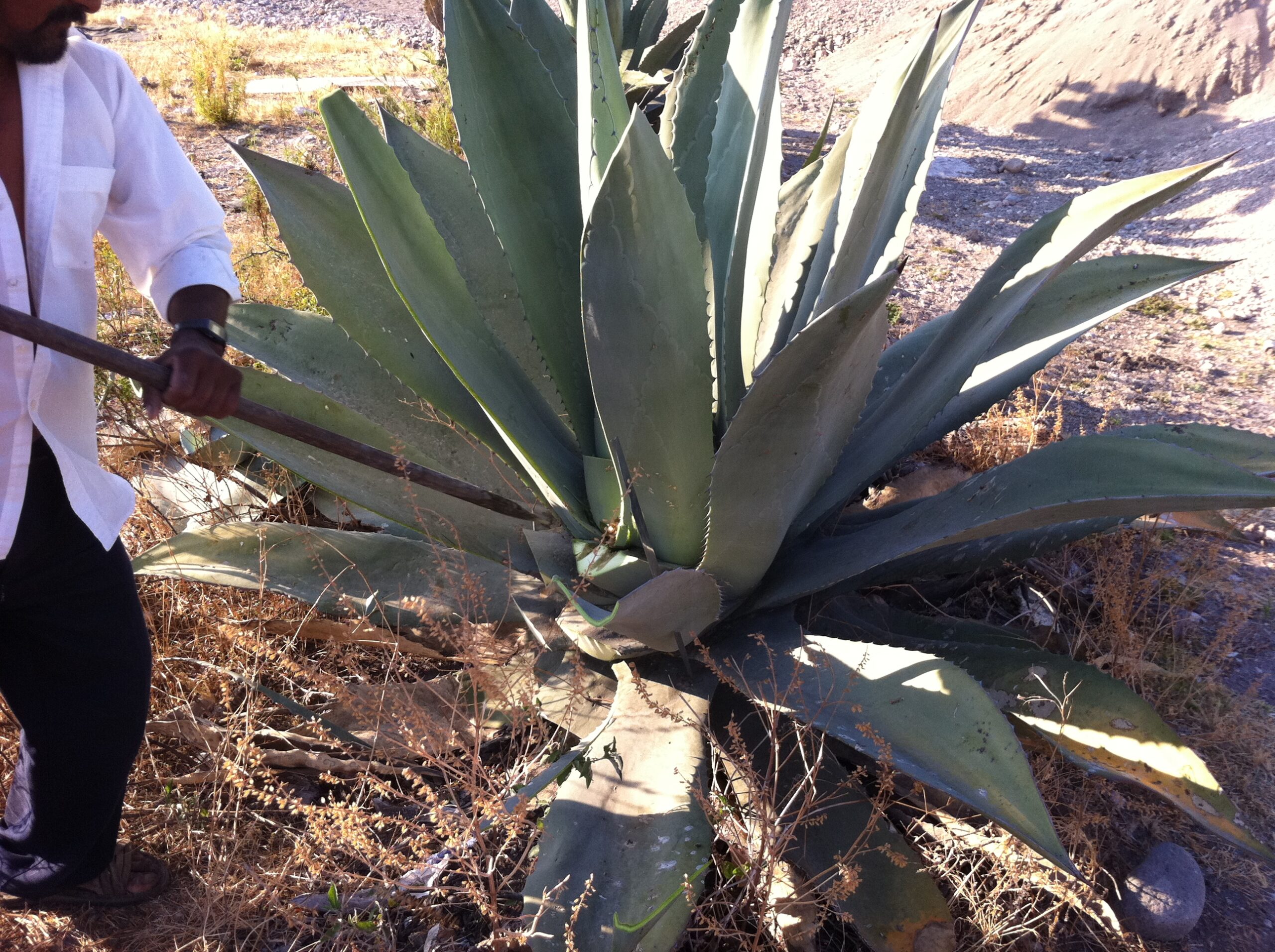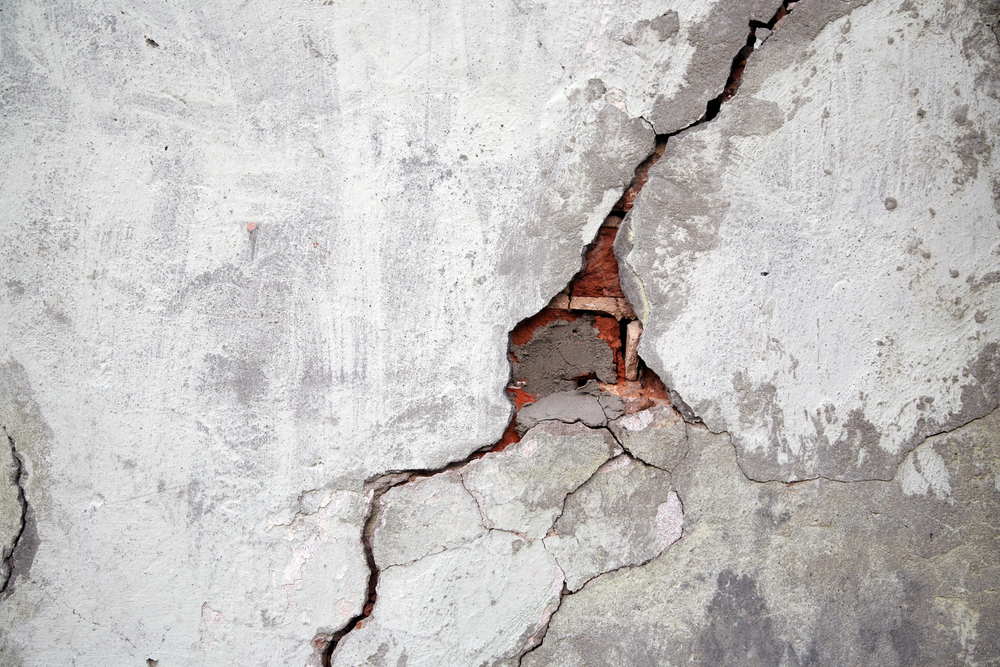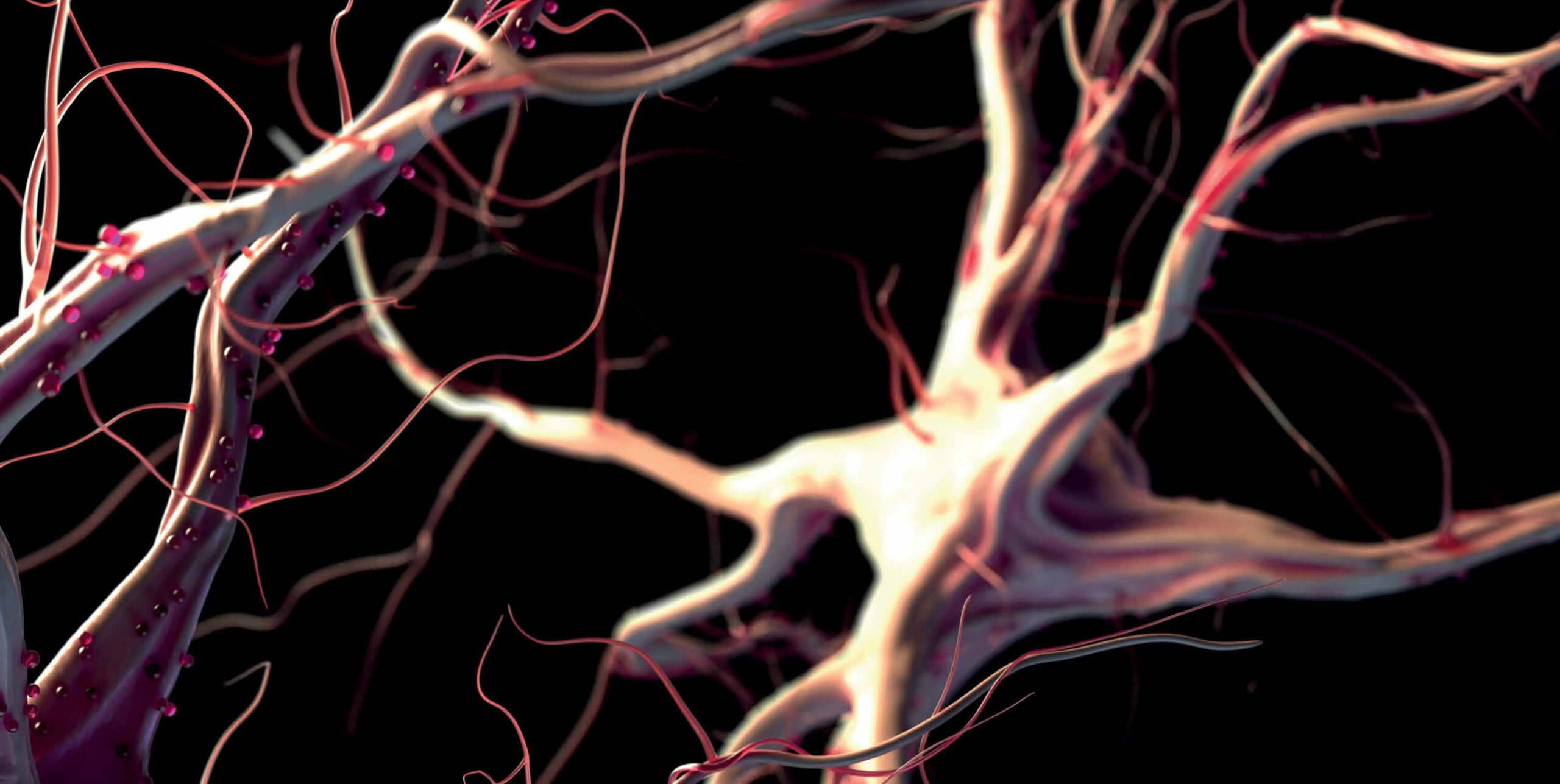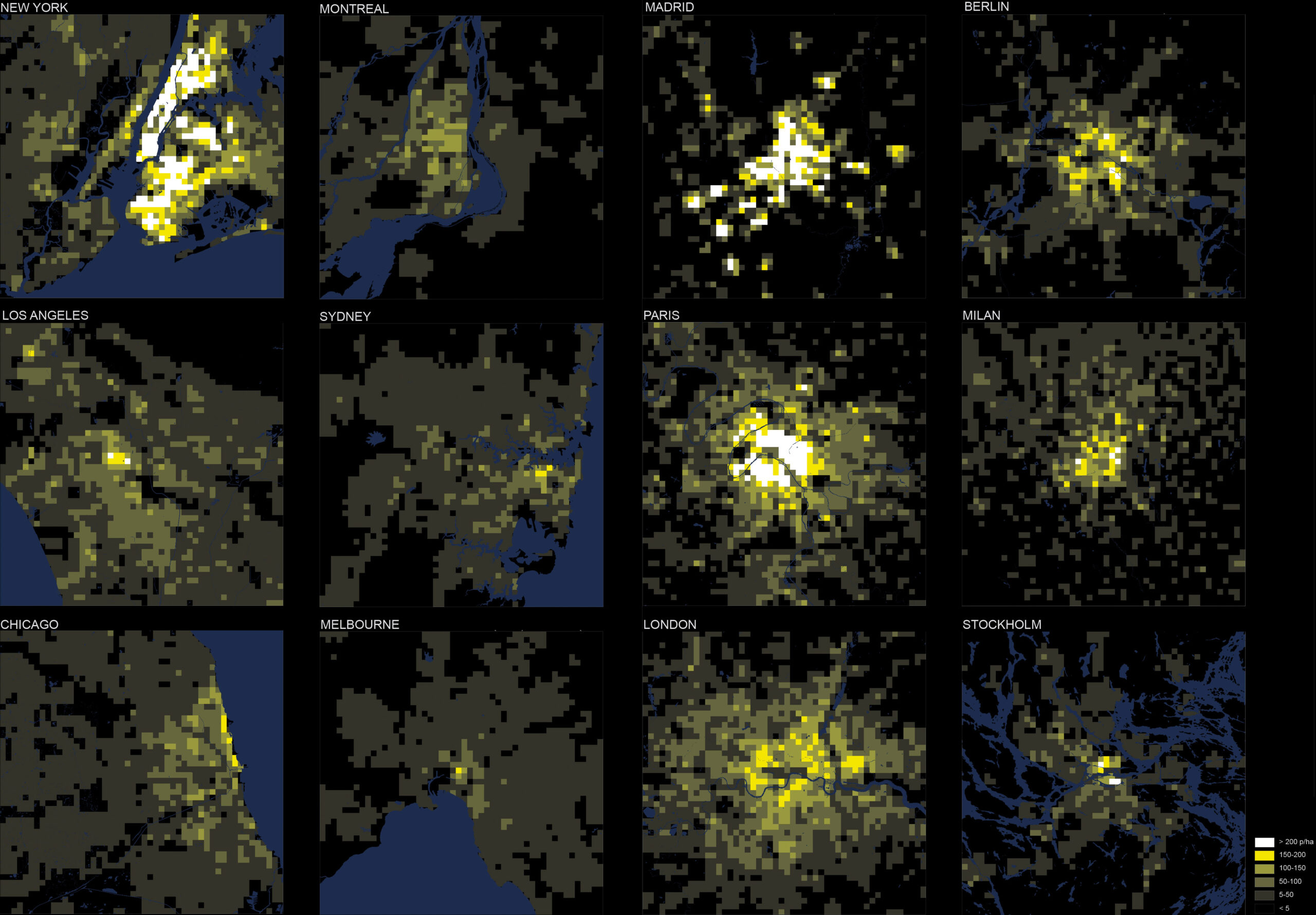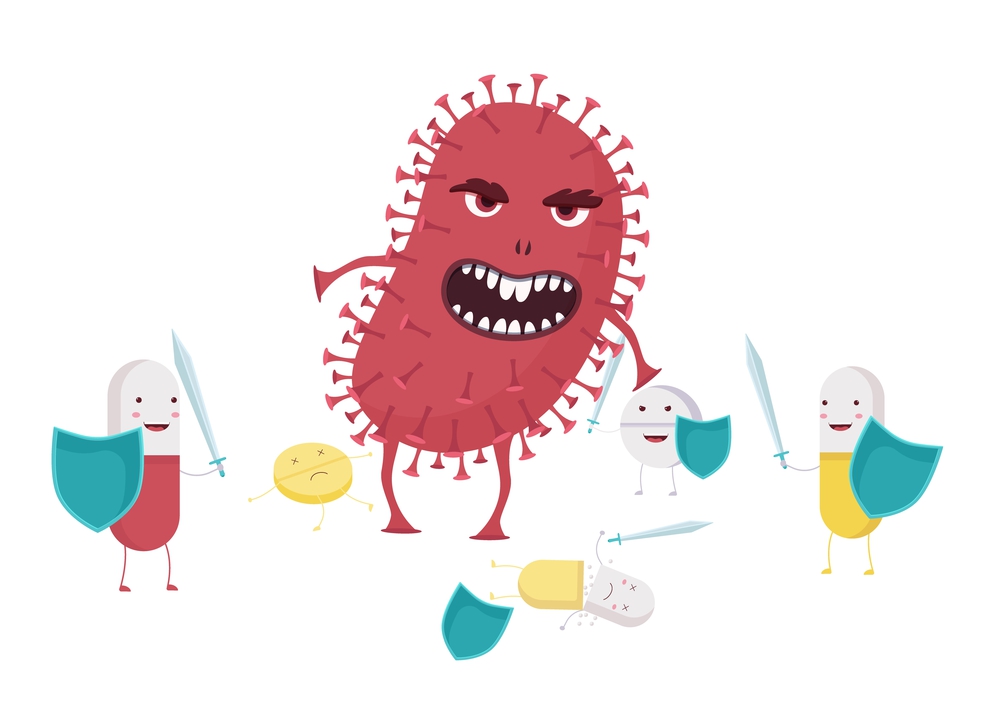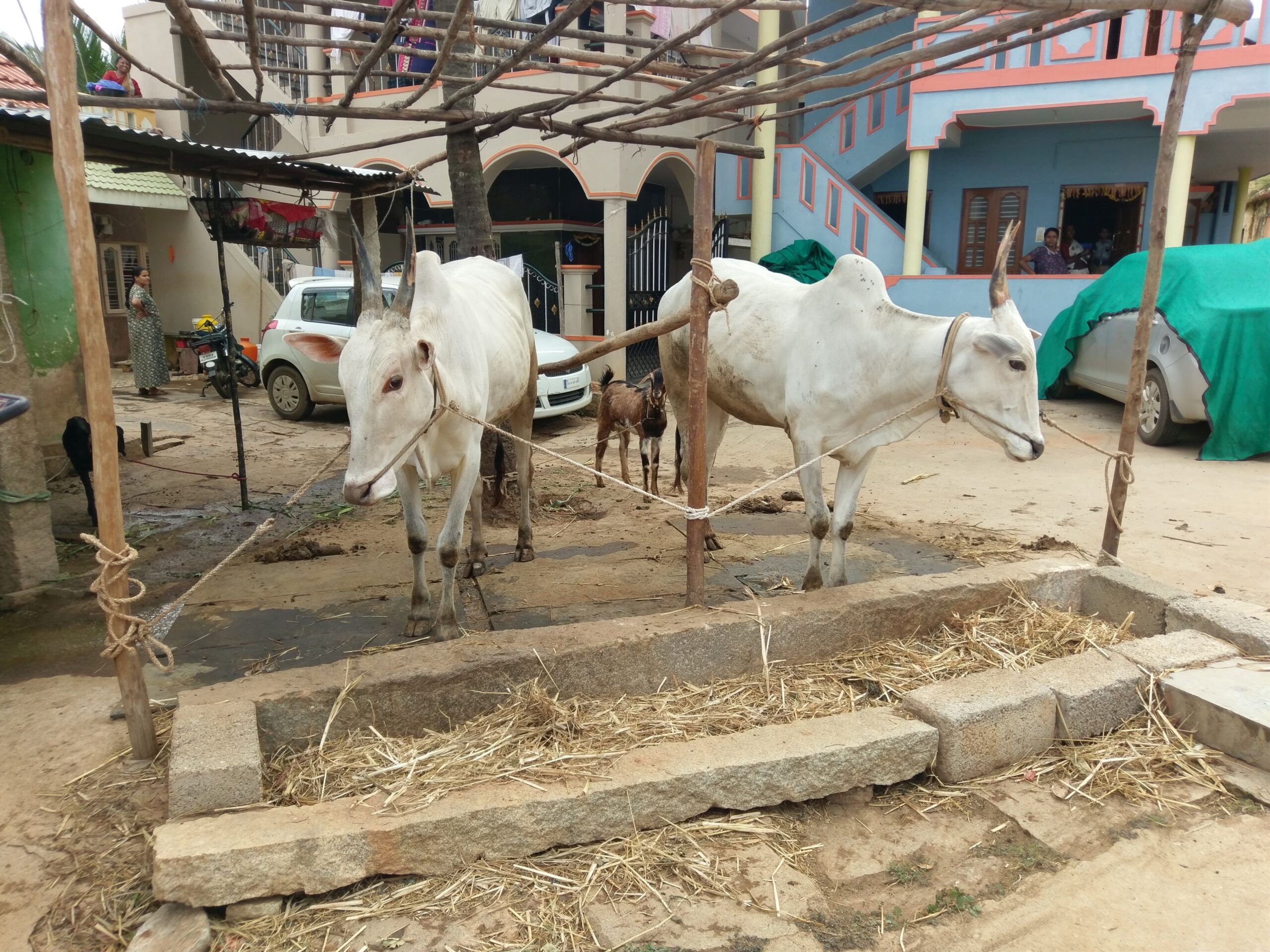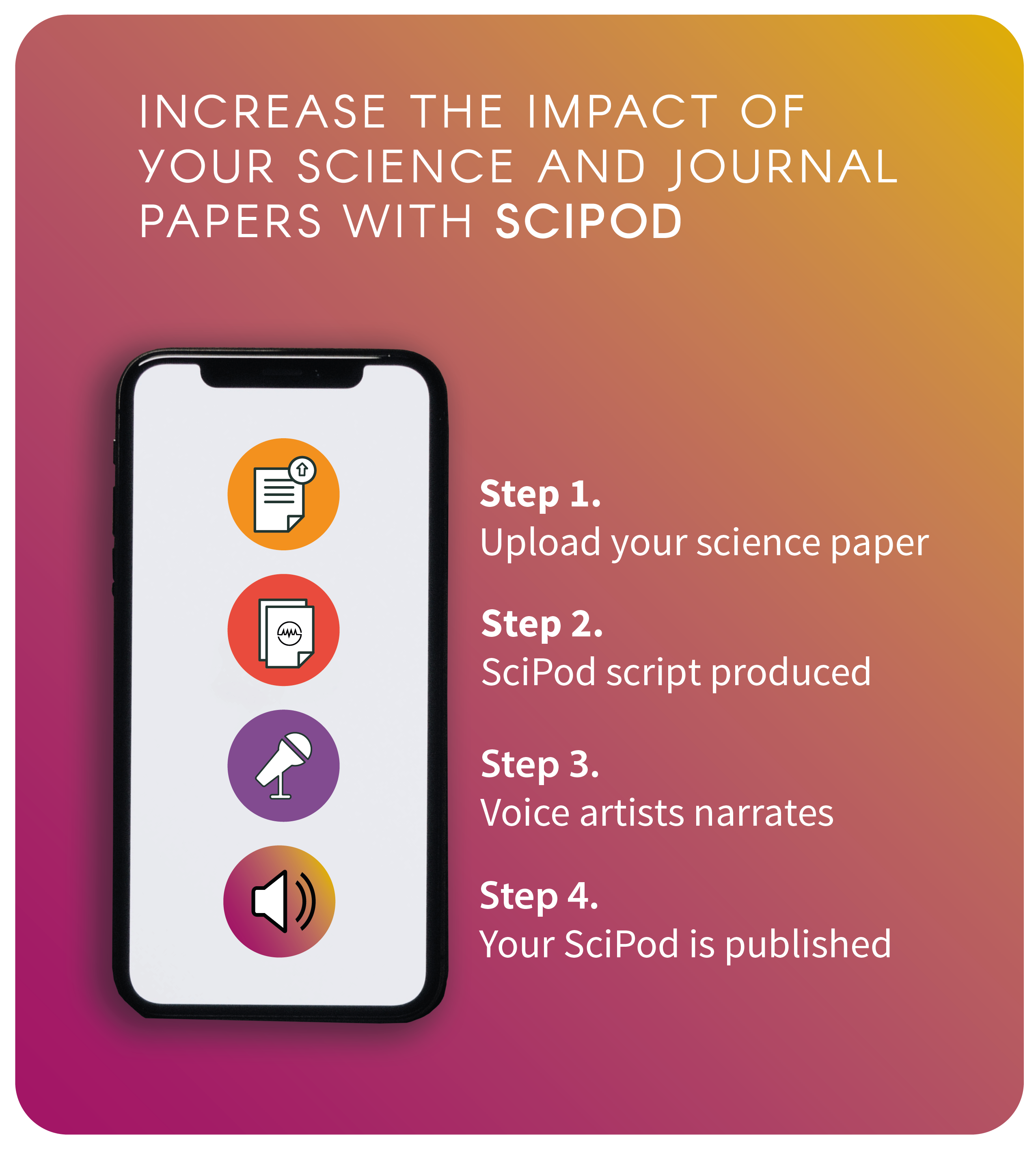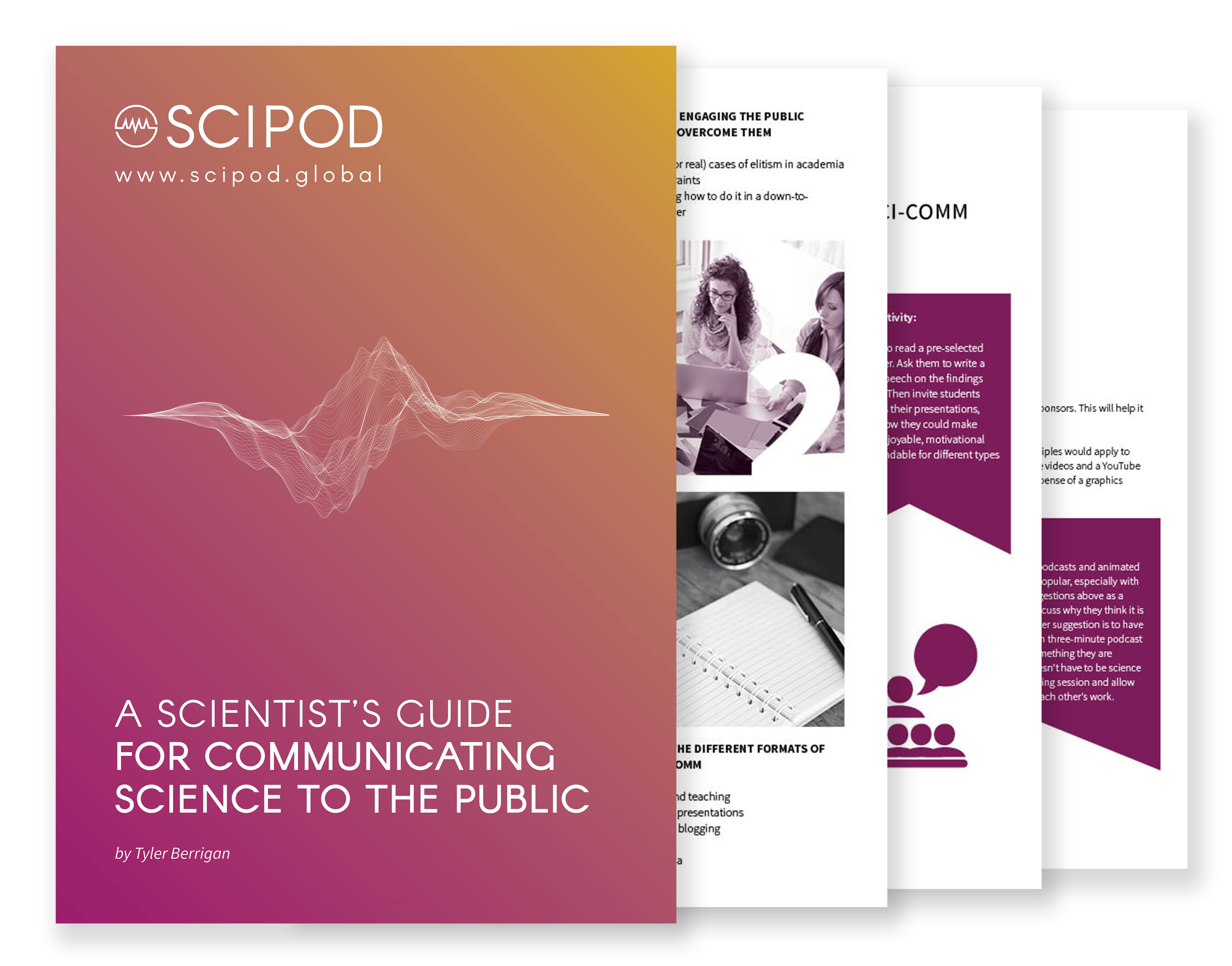Welcome to SciComm Radio
An exclusive interview series with leading scientists and science communicators

Click Below To Listen To A SciPod Radio Episode
Nicolas Teyssandier | Unravelling the Middle-to-Upper Paleolithic Transition in Europe
Audiobook
About this episode
The transition from the Middle to Upper Paleolithic in Europe marks a pivotal period in human evolution, with the replacement of Neanderthals by anatomically modern humans. A new study by Nicolas Teyssandier, Director of Research at the French National Center for Scientific Research (CNRS) and vice director of the TRACES laboratory at the Toulouse Jean Jaurès University examines the archaeological evidence for this transition and attempts to reconcile it with recent discoveries, shedding new light on this complex period of cultural and biological change. More
Original Article Reference
This SciPod is a summary of the paper ‘Us and Them: How to Reconcile Archaeological and Biological Data at the Middle-to-Upper Palaeolithic Transition in Europe?’ published in the Journal of Paleolithic Archaeology, https://doi.org/10.1007/s41982-023-00166-8
Contact
For further information, you can connect with Nicolas Teyssandier at teyssandier@univ-tlse2.fr or on Twitter @teyssand31, on Bluesky @teyssand31.bsky.social or on Instagram @teyssandiernicolas
Nicolas Teyssandier acknowledges the Agence Nationale de la Recherche for its financial support for the TRANSPYR project “Rethinking the Middle to Upper Palaeolithic transition: from human migrations to territorial settlement logics during MIS 3 using the Pyrenees as an example”
Image credit: Mircea Gherase. Source: Trinkaus E., Constantin S., Zilhao J., 2013. Life and death at the Pestera cu Oase: a setting for Modern Human emergence in Europe. Oxford University Press, Oxford.
This work is licensed under a Creative Commons Attribution 4.0 International License. 
What does this mean?
Share: You can copy and redistribute the material in any medium or format
Adapt: You can change, and build upon the material for any purpose, even commercially.
Credit: You must give appropriate credit, provide a link to the license, and indicate if changes were made.
Increase the impact of your research!
More episodes
Prof. Neeraj Rajasekar | The gap between support for diversity in principle and in practice in the USA
Audiobook
About this episode
Americans generally celebrate the abstract principle of diversity but does this translate into the policies that they support and the friendships that they form? A new study from Prof. Neeraj Rajasekar of the University of Illinois Springfield, Prof. Evan Stewart of the University of Massachusetts and Prof. Douglas Hartmann of the University of Minnesota, examines this. Rajasekar and colleagues find inconsistencies between Americans’ support for diversity in principle versus their attitudes in their day-to-day lives. The findings reveal widespread gaps that exist across demographic groups, with implications for understanding public opinion and advancing diversity efforts in the United States. More
Original Article Reference
This SciPod is a summary of the paper ‘Principle-Policy and Principle-Personal Gaps in Americans’ Diversity Attitudes’ published in Du Bois Review: Social Science Research on Race, https://doi.org/10.1017/S1742058X24000079
This work is licensed under a Creative Commons Attribution 4.0 International License. 
What does this mean?
Share: You can copy and redistribute the material in any medium or format
Adapt: You can change, and build upon the material for any purpose, even commercially.
Credit: You must give appropriate credit, provide a link to the license, and indicate if changes were made.
Increase the impact of your research!
More episodes
Professor Gaetano Lotrecchiano | How can we ensure that scientists in collaborative teams work well together?
Audiobook
About this episode
Recent studies in team science highlight the importance of individual motivations, reflective practices, and competency development in fostering effective collaborative research. Research conducted by Professor Gaetano Lotrecchiano at the George Washington University School of Medicine and Health Sciences along with scholars from around the country, sheds light on how researchers can better prepare for and engage in team science, addressing complex challenges in scientific collaboration. More
Original Article Reference
This SciPod is a summary of ‘A framework for developing team science expertise using a reflective-reflexive design method (R2DM)’ published in Humanities and Social Sciences Communications, ‘Individual and team competencies in translational teams’ in the Journal of Clinical and Translational Science, and ‘Examining Translational Team Science Competencies through Sensemaking’.
Contact
For further information, you can connect with Gaetano R. Lotrecchiano at glotrecc@gwu.edu
This work is licensed under a Creative Commons Attribution 4.0 International License. 
What does this mean?
Share: You can copy and redistribute the material in any medium or format
Adapt: You can change, and build upon the material for any purpose, even commercially.
Credit: You must give appropriate credit, provide a link to the license, and indicate if changes were made.
Increase the impact of your research!
More episodes
Dr Sandra Goritschnig – Dr Pasquale Tripodi | The Science of Greens: Using Genetic Insights to Cultivate Better, Stronger Lettuce
Audiobook
About this episode
In recent years, rapid advancements in techniques for genetic analysis and manipulation have enhanced our potential to understand and improve crop diversity. An innovative project led by Dr. Pasquale Tripodi of the Italian Council for Agricultural Research and Economics and Dr Sandra Goritschnig of the European Cooperative Programme for Plant Genetic Resources marks a significant advance in the study of lettuce genetics. Their recently published research platforms a highly sophisticated technique to analyse genetic diversity within lettuces called Single Primer Enrichment Technology, or SPET for short. This approach provides a highly detailed view of lettuce genetics and also has significant implications for agricultural resilience and crop selection and breeding. More
Original Article Reference
This Audio is a summary of the paper ‘Development and application of Single Primer Enrichment Technology (SPET) SNP assay for population genomics analysis and candidate gene discovery in lettuce’, in Frontiers in Plant Science, https://doi.org/10.3389/fpls.2023.1252777
Contact
For further information , you can connect with Dr Sandra Goritschnig at s.goritschnig@cgiar.org or Dr Pasquale Tripodi at pasquale.tripodi@crea.gov.it
Cover image credit: CGN, The Netherlands
This work is licensed under a Creative Commons Attribution 4.0 International License. 
What does this mean?
Share: You can copy and redistribute the material in any medium or format
Adapt: You can change, and build upon the material for any purpose, even commercially.
Credit: You must give appropriate credit, provide a link to the license, and indicate if changes were made.
Increase the impact of your research!
More episodes
Dr Luis Gimeno-Sotelo | Statistical evidence of the link between drought and atmospheric moisture transport
Audiobook
About this episode
Much of the world’s rainfall is triggered by the transport of moisture along corridors high up in the atmosphere. Through fresh analysis of historical climate data, Luis Gimeno-Sotelo and colleagues at the University of Vigo have shown for the first time how the causes of certain droughts can be directly linked with a lack of moisture being transported along these corridors. Their results could help climate scientists to better predict when and where droughts will occur in the future. More
Original Article Reference
This Audio is a summary of the papers ‘Unravelling the origin of the atmospheric moisture deficit that leads to droughts’, in Nature Water, doi.org/10.1038/s44221-023-00192-4,
And ‘The increasing influence of atmospheric moisture transport on hydrometeorological extremes in the Euromediterranean region with global warming’, in Communications Earth & Environment, doi.org/10.1038/s43247-024-01787-9.
Contact
For further information, you can connect with Dr Luis Gimeno-Sotelo at luis.gimeno-sotelo@uvigo.es
This work is licensed under a Creative Commons Attribution 4.0 International License. 
What does this mean?
Share: You can copy and redistribute the material in any medium or format
Adapt: You can change, and build upon the material for any purpose, even commercially.
Credit: You must give appropriate credit, provide a link to the license, and indicate if changes were made.
Increase the impact of your research!
More episodes
Dr. Luqi Ke – Prof. Dr. Qing Liu | Shipping Freight Rates: Mapping the progress of quantitative models
Audiobook
About this episode
Freight rates are crucial in the shipping industry, underpinning the operations of shipowners, carriers, and trading companies. Over the past two decades, various studies have aimed to model these rates, employing various approaches to study different sectors of the shipping industry. A research team led by Qing Liu and Luqi Ke at the University of Hamburg presents a new review of these studies, which have important implications for the future of freight rate modelling. More
Original Article Reference
This Audio is a summary of the paper ‘Quantitative modelling of shipping freight rates: developments in the past 20 years’, in Maritime Policy & Management, https://doi.org/10.1080/03088839.2022.2138595
Contact
For further information, you can connect with Prof. Dr. Qing Liu at qing.liu@uni-hamburg.de or Dr. Luqi Ke at keluqi1993@gmail.com
This work is licensed under a Creative Commons Attribution 4.0 International License. 
What does this mean?
Share: You can copy and redistribute the material in any medium or format
Adapt: You can change, and build upon the material for any purpose, even commercially.
Credit: You must give appropriate credit, provide a link to the license, and indicate if changes were made.
Increase the impact of your research!
More episodes
Dr. Serena Kuang | Inside the Kidney’s ‘Countercurrent’ Mystery: A New Model for Teaching and Studying Water Balance
Audiobook
About this episode
Our kidneys filter blood to remove waste and can regulate water balance. We’ve all experienced that when we’re thirsty urine becomes concentrated, signalling us to drink more water. When we drink excess water, we urinate more frequently, and the urine is diluted. The kidneys’ ability to concentrate or dilute urine according to our body’s need relies on countercurrent multiplication (or CCM), a complex process that generates a salt concentration gradient in the kidney. However, CCM is challenging to teach and understand. Dr. Serena Kuang, a researcher and educator at Oakland University William Beaumont School of Medicine, has developed a more understandable CCM model and clears up errors in existing explanations making CCM easier to understand and teach. More
Original Article Reference
This Audio is a summary of the paper ‘A better explanation of countercurrent multiplication in the formation of the corticopapillary osmotic gradient in the outer medulla’, in Advances in Physiology Education, https://doi.org/10.1152/advan.00227.2022
Contact
For further information, you can connect with Dr. Serena Kuang at Kuang@oakland.edu
This work is licensed under a Creative Commons Attribution 4.0 International License. 
What does this mean?
Share: You can copy and redistribute the material in any medium or format
Adapt: You can change, and build upon the material for any purpose, even commercially.
Credit: You must give appropriate credit, provide a link to the license, and indicate if changes were made.
Increase the impact of your research!
More episodes
Dr Neil Cunnigham | The Heart of the Matter: How Simulation Reflects Clinical Stress in Critical Care Training
Audiobook
About this episode
In the high-stakes world of critical care, medical professionals are frequently called upon to perform life-saving procedures under intense pressure. Among these, airway intubation stands out as one of the most critical and technically demanding tasks. This procedure, which involves inserting a tube into a patient’s airway to ensure that they can breathe, is often performed in emergency situations where seconds count. The ability to intubate swiftly and accurately can mean the difference between life and death. However, this task is also fraught with stress, particularly for trainees who are still developing their skills. To better understand how these trainees cope with the stress of intubation, Dr Neil Cunningham of the University of Melbourne and colleagues conducted a groundbreaking study comparing physiological stress responses in simulated and clinical environments. Their findings offer valuable insights into the effectiveness of simulation-based training, which has become a cornerstone of medical education. More
Original Article Reference
This Audio is a summary of the paper ‘Heart rate responses in critical care trainees during airway intubation: a comparison between the simulated and clinical environments’, in BMC Emergency Medicine, https://doi.org/10.1186/s12873-023-00832-8
Contact
For further information, you can connect with Dr Neil Cunnigham at neil.cunningham@svha.org.au
This work is licensed under a Creative Commons Attribution 4.0 International License. 
What does this mean?
Share: You can copy and redistribute the material in any medium or format
Adapt: You can change, and build upon the material for any purpose, even commercially.
Credit: You must give appropriate credit, provide a link to the license, and indicate if changes were made.
Increase the impact of your research!
More episodes
Dr. Ivy Razmus | Reducing Pressure Injuries in Hospitalized Children and Babies
Audiobook
About this episode
The development of pressure injuries in hospital patients is a regular occurrence, and certain areas of the body are more susceptible. Although there is abundant research on pressure injuries in adult patients, studies relating to infant and child patients are lacking. Dr. Ivy Razmus at the University of Detroit Mercy has conducted extensive research on the prevention of pressure injuries in patients under the age of 12 years. She highlights the crucial role of advanced practice nurses in managing this widespread problem. More
Original Article Reference
This Audio is a summary of the papers: ‘The Role of the Wound, Ostomy, and Continence Nurse With Children’, in Journal of Wound, Ostomy and Continence Nursing, doi.org/10.1097/WON.0b013e3181e39774; ‘Weight and Pressure Distribution on Mattress Surface Varies Between Children and Adults’, in Biomedical Sciences Instrumentation, 56, 370-374; and ‘Neonatal Intensive Care Nursing Pressure Injury Prevention Practices’, in Journal of Wound, Ostomy and Continence Nursing, doi.org/10.1097/WON.0000000000000805
Contact
For further information, you can connect with Dr Razmus at razmusij@udmercy.edu
This work is licensed under a Creative Commons Attribution 4.0 International License. 
What does this mean?
Share: You can copy and redistribute the material in any medium or format
Adapt: You can change, and build upon the material for any purpose, even commercially.
Credit: You must give appropriate credit, provide a link to the license, and indicate if changes were made.
Increase the impact of your research!
More episodes
Professor Richard M. Eaton | Rethinking Cultural Exchange in India in the Persianate Age, 1000-1765
Audiobook
About this episode
In his book India in the Persianate Age, historian Professor Richard M. Eaton of the University of Arizona challenges long-held assumptions about India’s history from 1000 to ca. 1800 CE. By examining the complex interactions between Persian and Sanskrit cultural spheres, Eaton offers a fresh perspective on this pivotal period, shedding light on the dynamic processes of cultural exchange and integration that shaped the subcontinent. More
Original Article Reference
This SciPod is a summary of the Introduction and opening chapter of the book ‘India in the Persianate Age: 1000-1765’, published by the University of California Press, and available at https://www.amazon.co.uk/India-Persianate-Age-Richard-Eaton/dp/0520325125
and
https://www.amazon.co.uk/India-Persianate-Age-Richard-Eaton/dp/0141985399
Contact
For further information, you can connect with Professor Richard M. Eaton at reaton@arizona.edu
This work is licensed under a Creative Commons Attribution 4.0 International License. 
What does this mean?
Share: You can copy and redistribute the material in any medium or format
Adapt: You can change, and build upon the material for any purpose, even commercially.
Credit: You must give appropriate credit, provide a link to the license, and indicate if changes were made.
Increase the impact of your research!
More episodes
Dr. Robert Tomkowski | Investigating How Dimpled Surfaces Can Minimise Friction
Audiobook
About this episode
Dimpled surfaces offer a useful and easily implementable way to reduce friction between lubricated surfaces as they slide over each other. Through cutting-edge simulations, Dr. Robert Tomkowski and colleagues at the KTH Royal Institute of Technology in Sweden explore how the microscale structures of surface dimples can be optimized to minimize friction. Their findings could help to reduce wear in mechanical systems, while also making them more energy efficient. More
Original Article Reference
This Audio is a summary of the paper ‘Numerical Study of the Influence of Geometric Features of Dimple Texture on Hydrodynamic Pressure Generation’, in Metals, https://doi.org/10.3390/met10030361
Contact
For further information, you can connect with Dr Robert Tomkowski at rtom@kth.se
This work is licensed under a Creative Commons Attribution 4.0 International License. 
What does this mean?
Share: You can copy and redistribute the material in any medium or format
Adapt: You can change, and build upon the material for any purpose, even commercially.
Credit: You must give appropriate credit, provide a link to the license, and indicate if changes were made.
Increase the impact of your research!
More episodes
Assistant Professor Wen Yin (Elaine) Cheng | Bronze Casting Moulds Reveal Late Shang Dynasty Craftsmanship
Audiobook
About this episode
Bronze vessel casting technology in ancient China’s Shang Dynasty has long been of interest to archaeologists. Assistant Professor Wen Yin (Elaine) Cheng at Wilfrid Laurier University has shed new light on the knowledge and organisation of artisans who made these pieces. By analysing bronze vessel casting moulds, she has uncovered intricate production sequences that offer fresh insights into the social dynamics of this ancient civilization beyond the elite class typically depicted in historical records. More
Original Article Reference
This SciPod is a summary of the paper ‘Bronze casting clay moulds and production sequences: understanding knowledge and Organization of the Artisans in Late Shang (14th – 11th century BC), China,’ in Asian Archaeology, https://doi.org/10.1007/s41826-022-00057-x
Contact
For further information, you can connect with Wen Yin (Elaine) Cheng at echeng@wlu.ca
This work is licensed under a Creative Commons Attribution 4.0 International License. 
What does this mean?
Share: You can copy and redistribute the material in any medium or format
Adapt: You can change, and build upon the material for any purpose, even commercially.
Credit: You must give appropriate credit, provide a link to the license, and indicate if changes were made.
Increase the impact of your research!
More episodes
Pulque: The Ancient Drink That Could Shape the Future of Health
Audiobook
About this episode
Pulque, an ancient Mexican beverage, is making waves in the scientific community—not just as a cultural relic, but as a potential health-boosting powerhouse. A team of researchers, including Prof. Rogelio Valadez-Blanco, Dr. Yesica Ruiz-Ramírez, and Prof. Paula Guadarrama-Mendoza, from Universidad Tecnológica de La Mixteca, has been investigating the hidden potential of the bacteria found in this traditional drink. Their findings suggest that pulque’s naturally occurring lactic acid bacteria could play a key role in promoting gut health and even combating harmful pathogens that cause foodborne illnesses. More
Original Article Reference
This Audio is a summary of the paper ‘Probiotic activity traits in vitro and production of antimicrobial peptides by Lactobacillaceae isolates from pulque using Lactobacillus acidophilus NCFM as control’, in Brazilian Journal of Microbiology, https://doi.org/10.1007/s42770-022-00684-7
The authors of the paper include Prof. Rogelio Valadez-Blanco, Dr. Yesica Ruiz-Ramírez, and Prof. Paula Guadarrama-Mendoza. The researchers also wish to acknowledge the invaluable contribution to the research program by Prof. Edith Ponce-Alquicira of the Universidad Autónoma Metropolitana.
Contact
For further information, you can connect with Prof. Rogelio Valadez-Blanco at rvaladez@mixteco.utm.mx
This work is licensed under a Creative Commons Attribution 4.0 International License. 
What does this mean?
Share: You can copy and redistribute the material in any medium or format
Adapt: You can change, and build upon the material for any purpose, even commercially.
Credit: You must give appropriate credit, provide a link to the license, and indicate if changes were made.
Increase the impact of your research!
More episodes
Professor Suzanne Scarlata – Dr. Nima Rahbar | How a Biological Enzyme Could Help Concrete to Heal Itself
Audiobook
About this episode
As an inherently brittle material, concrete often needs to be replaced after just a few decades: driving a demand which incurs significant costs for Earth’s climate. Through their research, Professors Suzanne Scarlata and Nima Rahbar at Worcester Polytechnic Institute, Massachusetts, introduce a new mechanism that allows concrete to quickly repair itself, with the help of an enzyme vital to the function of living cells. This approach could help to reduce the world’s insatiable demand for concrete. More
Original Article Reference
This article is a summary of the paper “An enzymatic self-healing cementitious material,” published in Applied Materials Today, https://doi.org/10.1016/j.apmt.2021.101035
Contact
For further information, contact Prof. Suzanne Scarlata at sfscarlata@wpi.edu or Dr. Nima Rahbar at nrahbar@wpi.edu
This work is licensed under a Creative Commons Attribution 4.0 International License. 
What does this mean?
Share: You can copy and redistribute the material in any medium or format
Adapt: You can change, and build upon the material for any purpose, even commercially.
Credit: You must give appropriate credit, provide a link to the license, and indicate if changes were made.
Increase the impact of your research!
More episodes
Lixiang Zhang | Seeing the Full Picture: The CPS-Merge Approach to Assess Complex Datasets
Audiobook
About this episode
In the age of big data, and particularly in specialisations such as artificial intelligence, biology, and medicine, researchers often generate large and complex datasets that are challenging to analyse. This is particularly true for multi-view data, otherwise known as multimodal data, which are data that encompass multiple perspectives concerning a single entity or phenomenon. In the case of single-cell genomics, for instance, researchers can measure a huge range of different characteristics concerning an individual cell, such as RNA expression levels or protein levels. While multi-view datasets provide vast amounts of information, they are difficult to analyse because looking at each type of data within them provides only a small part of the overall picture. A new computational approach called Covering Point Set-merge analysis, or CPS-merge analysis for short, has been developed by Lixiang Zhang of Pennsylvania State University and colleagues, and it aims to assist researchers to merge the different types of data present in multi-view datasets into one coherent and meaningful set of results, without misrepresenting the individual contributions of each type of data. More
Original Article Reference
This Audio is a summary of the paper ‘Multi-view clustering by CPS-merge analysis with application to multimodal single-cell data’, in PLOS Computational Biology. doi.org/10.1111/nyas.14686
Contact
For further information, you can connect with Lixiang Zhang at phoelief@gmail.com
This work is licensed under a Creative Commons Attribution 4.0 International License. 
What does this mean?
Share: You can copy and redistribute the material in any medium or format
Adapt: You can change, and build upon the material for any purpose, even commercially.
Credit: You must give appropriate credit, provide a link to the license, and indicate if changes were made.
Increase the impact of your research!
More episodes
Dr. Robert Kass | Beating arrhythmias with a heart in a dish
Audiobook
About this episode
In the future, doctors will be able to create tiny replicas of your tissues in the lab, and then test them against a range of drugs, revealing exactly which treatments would work best for you before you even visit a drug store. This future of personalised medicine is driven by researchers such as Dr. Robert Kass of the Columbia University Medical Center. Kass and colleagues have pioneered the use of stem cells to develop personalized treatments for a genetic heart condition that disrupts normal heart rhythms. The researchers reprogrammed a patient’s skin cells into stem cells called induced pluripotent stem cells (or iPSCs for short), and they then induced the iPSCs to turn into heart cells. This allowed the research team to study how genetic mutations in the resulting heart cells affect the heart’s ion channels. Their research revealed that a mutation in a specific sodium channel was causing dangerous heart rhythms and that combining the drug mexiletine with a pacemaker device to increase heart rate, provided an effective and personalised treatment. More
Original Article Reference
This Audio is a summary of the paper ‘Induced pluripotent stem cells used to reveal drug actions in a long QT syndrome family with complex genetics’, in The Journal of General Physiology, https://doi.org/10.1085/jgp.201210899
Contact
For further information, you can connect with Dr Robert Kass at rsk20@cumc.columbia.edu
This work is licensed under a Creative Commons Attribution 4.0 International License. 
What does this mean?
Share: You can copy and redistribute the material in any medium or format
Adapt: You can change, and build upon the material for any purpose, even commercially.
Credit: You must give appropriate credit, provide a link to the license, and indicate if changes were made.
Increase the impact of your research!
More episodes
Dr James E. Goldman | Dr Osama Al-Dalahmah – Confronting the Challenge of Huntington Disease
Audiobook
About this episode
Original Article Reference
This Audio is a summary of https://doi.org/10.33548/SCIENTIA566
This work is licensed under a Creative Commons Attribution 4.0 International License. 
What does this mean?
Share: You can copy and redistribute the material in any medium or format
Adapt: You can change, and build upon the material for any purpose, even commercially.
Credit: You must give appropriate credit, provide a link to the license, and indicate if changes were made.
Increase the impact of your research!
More episodes
Dr Elek Pafka | Mapping urban density from the neighbourhood to the metropolis
Audiobook
About this episode
So far, approaches to mapping the density of cities have often been oversimplified, causing them to overlook many key aspects of everyday urban life. Through his research, Dr Elek Pafka at the University of Melbourne introduces two new metrics for measuring urban density, which better capture its complex, multi-scale variations. His research offers deeper insights into how people experience and interact with cities, and could lead to new strategies to make our cities more productive, sustainable, and better places to live. More
Original Article Reference
This Audio is a summary of the paper ‘Multi‑scalar urban densities: from the metropolitan to the street level’, in Urban Design International, https://doi.org/10.1057/s41289-020-00112-y
Contact
For further information, you can connect with Dr Elek Pafka at pafkae@unimelb.edu.au
This work is licensed under a Creative Commons Attribution 4.0 International License. 
What does this mean?
Share: You can copy and redistribute the material in any medium or format
Adapt: You can change, and build upon the material for any purpose, even commercially.
Credit: You must give appropriate credit, provide a link to the license, and indicate if changes were made.
Increase the impact of your research!
More episodes
Saffiatou Darboe | Rising Above Resistance: How Bacterial Research is Saving Lives in The Gambia
Audiobook
About this episode
Antimicrobial resistance (or AMR for short) is a pressing global health challenge that poses significant risks, particularly in low- and middle-income countries. The extensive research conducted by Saffiatou Darboe of the London School of Hygiene and Tropical Medicine, The Gambia, and her colleagues, has been pivotal in understanding and addressing this issue within The Gambia and other regions in sub-Saharan Africa. This episode delves into four comprehensive studies conducted by Darboe and colleagues, shedding light on the impact of AMR, the importance of antibiograms, and specific outbreaks of resistant pathogens. More
Original Article Reference
This Audio is a summary of the papers ‘Using an Antibiogram Profile to Improve Infection Control and Rational Antimicrobial Therapy in an Urban Hospital in The Gambia’, in Antibiotics, https://doi.org/10.3390/antibiotics12040790, ‘Community-acquired Invasive Bacterial Disease in Urban Gambia, 2005–2015: A Hospital-based Surveillance’, in Clinical Infectious Diseases, https://doi.org/10.1093/cid/ciz463, ‘Investigation of sequential outbreaks of Burkholderia cepacian and multidrug-resistant extended spectrum β-lactamase producing Klebsiella species in a West African tertiary hospital neonatal unit: a retrospective genomic analysis’, in Lancet Microbe, https://doi.org/10.1016/S2666-5247(20)30061-6, and ‘Prevalence of Panton-Valentine Leukocidin (PVL) and Antimicrobial Resistance in Community-Acquired Clinical Staphylococcus aureus in an Urban Gambian Hospital: A 11-Year Period Retrospective Pilot Study’, in Frontiers in Cellular and Infection Microbiology, https://doi.org/10.3389/fcimb.2019.00170
Contact
For further information, you can connect with Saffiatou Darboe at Saffiatou.Darboe@lshtm.ac.uk
This work is licensed under a Creative Commons Attribution 4.0 International License. 
What does this mean?
Share: You can copy and redistribute the material in any medium or format
Adapt: You can change, and build upon the material for any purpose, even commercially.
Credit: You must give appropriate credit, provide a link to the license, and indicate if changes were made.
Increase the impact of your research!
More episodes
Prof. Miranda Reed | Shaping Young Minds: How Prenatal Cannabis Use Affects Brain Development
Audiobook
About this episode
As cannabis prohibition begins to unravel across the world, cannabis use has become more common and normalised. Researchers are assessing the impact of this on vulnerable populations, such as pregnant women. Strikingly, cannabis is among the most commonly used substances during pregnancy, raising serious concerns about its effects on unborn children and the long-term consequences this could have. Prof. Miranda Reed of Auburn University, and colleagues, have assessed how cannabis exposure in the womb can affect brain development and cognitive abilities, such as memory. More
Original Article Reference
This Audio is a summary of the paper ‘Prenatal Cannabinoid Exposure Elicits Memory Deficits Associated with Reduced PSA-NCAM Expression, Altered Glutamatergic Signaling, and Adaptations in Hippocampal Synaptic Plasticity,’ in cells, https://doi.org/10.3390/cells12212525
Contact
For further information, you can connect with Prof. Miranda Reed at reedmir@auburn.edu
This work is licensed under a Creative Commons Attribution 4.0 International License. 
What does this mean?
Share: You can copy and redistribute the material in any medium or format
Adapt: You can change, and build upon the material for any purpose, even commercially.
Credit: You must give appropriate credit, provide a link to the license, and indicate if changes were made.
Increase the impact of your research!
More episodes
Axel Marx | The successes of voluntary sustainability standards and the challenges they face
Audiobook
About this episode
Voluntary Sustainability Standards have emerged as influential tools to promote sustainable practices in global value chains and are becoming increasingly relevant in the context of new legislation by the European Union and other governments for the promotion of sustainable development. A comprehensive review led by Axel Marx at KU Leuven examines the evolution, impacts, and challenges of these standards, offering insights into their role in global governance and sustainable development. More
Original Article Reference
This audio is a summary of the paper ‘Global governance through voluntary sustainability standards: Developments, trends and challenges’ published in Global Policy, https://doi.org/10.1111/1758-5899.13401
This work is licensed under a Creative Commons Attribution 4.0 International License. 
What does this mean?
Share: You can copy and redistribute the material in any medium or format
Adapt: You can change, and build upon the material for any purpose, even commercially.
Credit: You must give appropriate credit, provide a link to the license, and indicate if changes were made.
Increase the impact of your research!
More episodes
Dr Di Yun | Lessons from Tai-Chi could make Travelling Wave Reactors a reality
Audiobook
About this episode
In principle, travelling wave reactors offer a safe, highly efficient approach to generating nuclear power. However, development has been held back by a variety of challenges linked to the need for extensively high burn-up in the reactor core, meaning very high rates of generated energy which can damage the reactor. Inspired by the principles of Tai-Chi, a team led by Di Yun from Xi’an Jiaotong University has shown that with the right approach, a high temperature operation, usually deemed as a threat, can be transformed into useful advantages, bringing the practical rollout of travelling wave reactors one step closer to reality. More
Original Article Reference
This Audio is a summary of the paper ‘A novel approach on designing ultrahigh burnup metallic TWR fuels: Upsetting the current technological limits’, in MRS bulletin. https://doi.org/10.1557/s43577-022-00420-4
Contact
For further information, you can connect with Dr Di Yun at diyun1979@xjtu.edu.cn
This work is licensed under a Creative Commons Attribution 4.0 International License. 
What does this mean?
Share: You can copy and redistribute the material in any medium or format
Adapt: You can change, and build upon the material for any purpose, even commercially.
Credit: You must give appropriate credit, provide a link to the license, and indicate if changes were made.
Increase the impact of your research!
More episodes
Dr Nicole Hune | The path back: Reconnecting with “the self” and others in recovery from schizophrenia and substance use disorders
Audiobook
About this episode
Schizophrenia and substance use disorders (or SUDs for short) are two significantly complex conditions that share overlapping symptoms and result in serious complications without treatment. Research suggests that a number of complex features are associated with these disorders, including neurological, physiological and bio-psycho-social. When these conditions occur together, they often create profound experiences of disconnectedness, both with oneself and with others in the support community. An article authored by Dr. Nicole Hune and Dr. Tom McGovern at Texas Tech University explores how treatment and recovery from co-occurring schizophrenia and SUDs could benefit from viewing these conditions from an integrated neurobiological and intersubjective understanding of connectedness.More
Original Article Reference
This Audio is a summary of the paper ‘A Perspective on Neurobiological and Intersubjective Connectedness in Coexisting Schizophrenia and Substance Use Disorders’, in Alcoholism Treatment Quarterly, https://doi.org/10.1080/07347324.2021.1996302
Contact
For further information, you can connect with Dr Nicole Hune at nikki.hune@ttu.edu
This work is licensed under a Creative Commons Attribution 4.0 International License. 
What does this mean?
Share: You can copy and redistribute the material in any medium or format
Adapt: You can change, and build upon the material for any purpose, even commercially.
Credit: You must give appropriate credit, provide a link to the license, and indicate if changes were made.
Increase the impact of your research!
More episodes
Dr Tony Croft | A New Frontier in Treating Acute Ulcerative Colitis: Predicting Corticosteroid Treatment Failure
Audiobook
About this episode
Ulcerative colitis is a chronic inflammatory bowel disease that affects the colon and rectum, leading to symptoms such as severe bloody diarrhoea and abdominal pain. For many patients, the disease can become acute, with symptoms worsening rapidly and requiring hospitalization. In these cases, corticosteroids—powerful anti-inflammatory drugs—are often the first line of treatment. However, the effectiveness of corticosteroids varies significantly among patients, and a considerable number do not respond to this treatment, putting them at risk of severe complications, including the need for surgery. More
Original Article Reference
This Audio is a summary of the open access original research article ‘A personalised algorithm predicting the risk of intravenous corticosteroid failure in acute ulcerative colitis’, in Alimentary Pharmacology & Therapeutics, https://doi.org/10.1111/apt.18190
Contact
For further information, you can connect with Dr Tony Croft at anthony.croft2@health.qld.gov.au
This work is licensed under a Creative Commons Attribution 4.0 International License. 
What does this mean?
Share: You can copy and redistribute the material in any medium or format
Adapt: You can change, and build upon the material for any purpose, even commercially.
Credit: You must give appropriate credit, provide a link to the license, and indicate if changes were made.
Increase the impact of your research!
More episodes
Prof. Ian Rabinowitz | Unveiling the Hidden Factors in Pancreatic Cancer
Audiobook
About this episode
Pancreatic cancer, particularly pancreatic ductal adenocarcinoma, stands as one of the most lethal cancers. Despite being only the ninth most common cancer in the United States, it is the fourth leading cause of cancer-related deaths. This discrepancy is due to its aggressive nature and the challenge of early diagnosis. By the time symptoms become apparent, the disease is often at an advanced stage, making it difficult to treat effectively. With a five-year survival rate of just 9% for late-stage diagnoses, researchers such as Prof. Ian Rabinowitz and his team at the University of New Mexico are determined to uncover the mysteries behind this formidable disease. More
Original Article Reference
This Audio is a summary of the paper ‘The inflammatory response of human pancreatic cancer samples compared to normal controls’, in PLOS ONE, https://doi.org/10.1371/journal.pone.0284232
Contact
For further information, you can connect with Prof. Ian Rabinowitz at irabinowitz@salud.unm.edu
This work is licensed under a Creative Commons Attribution 4.0 International License. 
What does this mean?
Share: You can copy and redistribute the material in any medium or format
Adapt: You can change, and build upon the material for any purpose, even commercially.
Credit: You must give appropriate credit, provide a link to the license, and indicate if changes were made.
Increase the impact of your research!
More episodes
Dr. Ellen Hoffmann | Rurbanity: How rural and urban phenomena intermingle worldwide
Audiobook
About this episode
Over the next few decades, the Earth’s urban population is set to explode, with the large majority of growth happening in cities across the Global South. A team of researchers at the Universities of Kassel and Göttingen, led by Prof. Andreas Bürkert and Prof. Nikolaus Schareika, predicts that these changes will be widely characterized by a merging of rural and urban features: a concept defined as ‘rurbanity’ in a recent landmark publication authored by Dr. Ellen Hoffmann and colleagues. By studying this phenomenon closely, the team aims to support cities in the Global South in their efforts to better prepare for the challenges to come. The concept is comprehensive enough to allow researchers to also understand ongoing processes of change in more mature cities of the North, such as climate-smart and socially inclusive adaptations, through the lens of rurbanity. More
Original Article Reference
This Audio is a summary of the paper ‘Rurbanity: a concept for the interdisciplinary study of rural–urban transformation’, in Sustainability Science, co-authored by Nikolaus Schareika, Christoph Dittrich, Eva Schlecht, Daniela Sauer, and Andreas Bürkert.
Contact
For further information, you can connect with Dr Ellen Hoffman at ellen.hoffmann@uni-kassel.de
This work is licensed under a Creative Commons Attribution 4.0 International License. 
What does this mean?
Share: You can copy and redistribute the material in any medium or format
Adapt: You can change, and build upon the material for any purpose, even commercially.
Credit: You must give appropriate credit, provide a link to the license, and indicate if changes were made.
Increase the impact of your research!
More episodes
Dr Li Lu | An illusion of parallax: explaining a mysterious signal at the edge of the solar system
Audiobook
About this episode
In 2009, astronomers detected a mysterious source of high-energy, chargeless particles, which appeared to originate from the very edge of the solar system. Through fresh analysis, Dr Li Lu and colleagues at the Chinese Academy of Sciences have discovered that this distance may be an illusion, created by an effect relating to the solar wind as viewed by the commonly used parallax method. If correct, the team’s theory suggests that the as-yet enigmatic signal could actually originate from a source just beyond Earth’s atmosphere. More
Original Article Reference
This Audio is a summary of the paper ‘Energetic Neutral Atom (ENA) Imaging Simulation of the Distant Planetary Magnetosphere and ENA Emission Discussion of the Solar Wind’, in Astronomy, https://doi.org/10.3390/astronomy1030013
Contact
For further information, you can connect with Dr Li Lu at luli@nssc.ac.cn
This work is licensed under a Creative Commons Attribution 4.0 International License. 
What does this mean?
Share: You can copy and redistribute the material in any medium or format
Adapt: You can change, and build upon the material for any purpose, even commercially.
Credit: You must give appropriate credit, provide a link to the license, and indicate if changes were made.
Increase the impact of your research!
More episodes
Prof. Mark Kimsey | The Earth’s Blueprint: How Soil Origins Guide Forest Management
Audiobook
About this episode
Forests are more than just a collection of trees; they are dynamic ecosystems that depend on a variety of factors to thrive. One of the most crucial yet often overlooked components of these ecosystems is the soil. Far from being just a passive foundation, soil is an active, living system that plays a vital role in determining the health and productivity of forests. A recent study by emeritus Professor James Moore of the University of Idaho and his colleagues offers a deep dive into how the geological origins of soil influence its chemical properties, shedding light on the intricate relationships between soil, vegetation, and forest management in the Inland Northwest region of the United States. More
Original Article Reference
This Audio is a summary of the paper ‘Geologic Soil Parent Material Influence on Forest Surface Soil Chemical Characteristics in the Inland Northwest, USA’, in Forests, https://doi.org/10.3390/f13091363
Contact
For further information, you can connect with corresponding author Prof. Mark Kimsey at mkimsey@uidaho.edu
This work is licensed under a Creative Commons Attribution 4.0 International License. 
What does this mean?
Share: You can copy and redistribute the material in any medium or format
Adapt: You can change, and build upon the material for any purpose, even commercially.
Credit: You must give appropriate credit, provide a link to the license, and indicate if changes were made.
Increase the impact of your research!
More episodes
Professor Paul Treitz | Mapping Environmental Change: Remote Sensing at the Frontlines of the Canadian Arctic
Audiobook
About this episode
The Arctic is warming at a rate of three to four times faster than the global average; a phenomenon known as Arctic amplification. This is, in large part, a result of warming atmospheric temperatures causing a decline in snow and ice cover at high latitudes. This, in turn, increases the amount of solar energy absorbed by marine and terrestrial surfaces. As a result, near surface temperatures continue to increase, resulting in a further reduction of snow and ice. This represents a positive feedback where increased temperatures are coupled with a decline in snow and ice cover. More
Original Article Reference
This Audio is a summary of the paper ‘Remote sensing of biogeophysical variables at the Cape Bounty Arctic Watershed Observatory, Melville Island, Nunavut, Canada,’ in Arctic Science, https://doi.org/10.1139/as-2023-0043
Contact
For further information, you can connect with Prof. Paul Treitz at paul.treitz@queensu.ca
Image credit: WorldView Image Data – Copyright 2016 DigitalGlobe Incorporated, Longmont CO USA 80503-6493
This work is licensed under a Creative Commons Attribution 4.0 International License. 
What does this mean?
Share: You can copy and redistribute the material in any medium or format
Adapt: You can change, and build upon the material for any purpose, even commercially.
Credit: You must give appropriate credit, provide a link to the license, and indicate if changes were made.
Increase the impact of your research!
More episodes
Dr Camille Mellin | Coral Reefs: A Lifeline for Global Nutrition Under Threat
Audiobook
About this episode
Coral reefs are often admired for their breathtaking beauty and rich biodiversity, but their significance goes far beyond what meets the eye. These vibrant underwater ecosystems are a vital source of food and nutrition for over 500 million people worldwide, particularly in tropical coastal regions where they serve as the backbone of local fisheries. However, coral reefs are under severe threat from the combined forces of climate change and overfishing, posing significant risks to global food security. In a recent Perspective article, Dr Camille Mellin of the University of Adelaide and her colleagues explored how these changes are impacting the nutritional value of fish that live on coral reefs, revealing important insights into the future of food and nutrition security. More
Original Article Reference
This Audio is a summary of the paper ‘Safeguarding nutrients from coral reefs under climate change’, in Nature Ecology & Evolution, https://doi.org/10.1038/s41559-022-01878-w
Contact
For further information, you can connect with Dr Camille Mellin at camille.mellin@adelaide.edu.au
This work is licensed under a Creative Commons Attribution 4.0 International License. 
What does this mean?
Share: You can copy and redistribute the material in any medium or format
Adapt: You can change, and build upon the material for any purpose, even commercially.
Credit: You must give appropriate credit, provide a link to the license, and indicate if changes were made.

